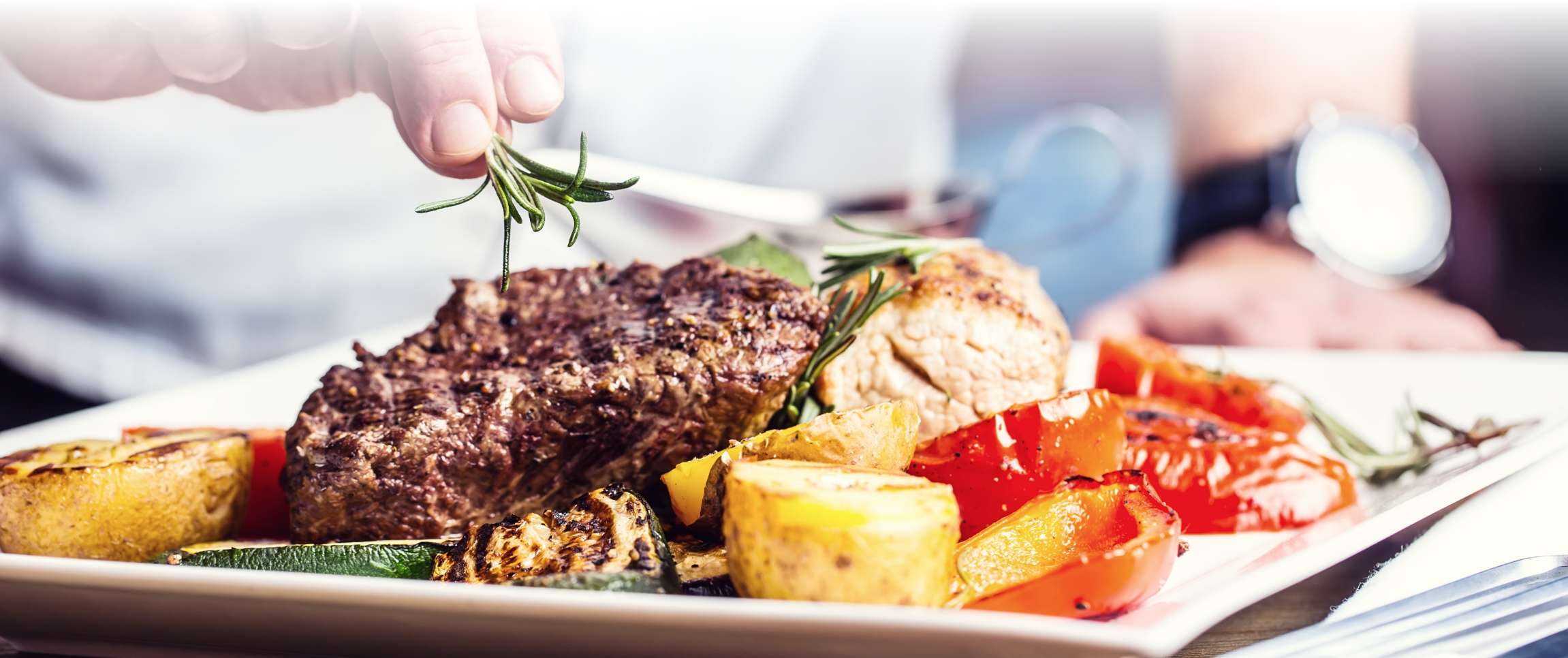As the saying goes, “You eat with your eyes first,” and what may sound poetic is actually rooted in science. Studies show that diners’ attitudes toward food are heavily influenced by appearance.
Artful plating entices diners by appealing to their senses and creating a positive first impression before the guest even takes a bite. For that reason, it’s important to keep in mind the factors that contribute to plating and presentation. Here are a few tips and techniques to keep in mind.
State of the Plate
Plating begins with the vessel (plate, bowl, cup) itself. Consider your brand’s style guide, including decor, colors, and overall vibe, to choose dinnerware and flatware that’s complementary. Look for dinnerware that can adequately hold your menu items without having too much extra room, which can create the impression that the meal is smaller than it is.
Consider both form and function to find dinnerware that is beautiful but also durable and useful for a variety of applications. Wide shallow bowls, for example, work well for pasta and rice dishes, some soups and stews, and a wide variety of plated main courses. Smaller items like side dishes may be served in smaller containers that taper toward the bottom to create the appearance of abundance.
Portion Control
The way we eat in restaurants continues to evolve, and over the past few years, we’ve seen a rise in small plates on menus. There’s an increasingly fine line between small plates, side dishes, and mains, but here’s one broad way to think about it: Small plates are meant to be enjoyed by multiple guests, with an emphasis on a shared experience. If guests request to split a main dish, consider plating each ‘half’ separately to create a better guest experience.
A Feast for the Senses
As you approach creating a composed plate, the rule of thirds can be one useful technique inspired by the art world: Split the plate into three equal sections. The main protein goes in the bottom third, toward the right; the starch in the top left third, and the vegetable in the top right. This provides somewhere for the eye to go and creates a substantial-looking plate.
Similarly, it’s important to think about how a cut of meat or vegetable will appear on the plate. An angled cut of meat such as steak or lamb is also known as a tranche cut. This type of cut is useful because it increases the surface area of the protein, creating the illusion that the portion is larger than if it were cut vertically. It also shows instantly that the food has been cooked to the proper temperature.
Color is one of the most important aspects of plating. Vibrant colors tell the guest that their meal is going to be fresh and flavorful. Contrasting colors add excitement to the plate, so consider ways to bring in contrast. You may even want to hang a color wheel somewhere in the kitchen to serve as a guide when chefs are creating dishes.
The color of your dinnerware is just as important as what you put on the plate. According to one study, using plates and glasses that contrasted with the food increased food consumption by 25% and beverage consumption by 84%! White is a traditional choice and can be useful for creating a clean, sleek appearance. But you may also want to consider vibrant colors, handmade pottery, and darker colors to help create visual intrigue.
Higher Ground
Creating height on the plate draws the guests’ eyes upward and creates the impression that the dish is substantial, filling, and artistic. Layer elements of the dish on top of one another to create height, using lightweight garnishes like crackers, tuiles, or sprouts to build vertically. But keep in mind that the primary function of a garnish should be to complement the flavors on the plate.
All garnishes should be 100% edible. Consider bringing in contrasting colors and textures with fresh herbs, microgreens, thinly sliced vegetables, and edible flowers to create a wow moment.
You can also use texture to build height and develop a more balanced dish. Not only is texture important in terms of taste, building layers of texture can help make a plate appear more dynamic, giving the guest more reasons to keep taking bite after bite.
The Guest Experience
A plate of food should be beautiful, but also approachable to the guest. Ensure whatever artistic measures you take don’t negatively impact the eating experience. For example, if you are serving a dish that’s meant to be eaten with a spoon, ensure all of the pieces can be scooped with that spoon without requiring cutting or further manipulation. Get ahead of potential errors and treat your staff to regular tastings of plated dishes to help identify any issues that may arise from plating.



